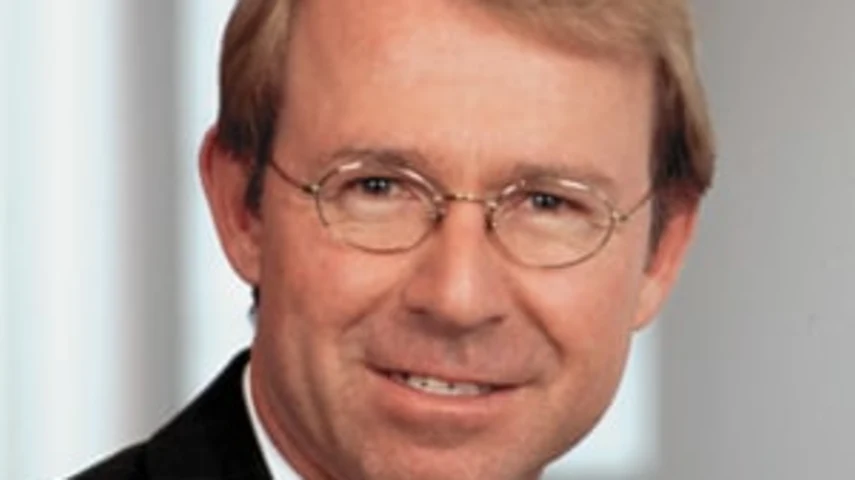Why it will pay for investors to be cautiously optimistic in 2014



The growth outlook for 2014 is looking up, but as AMP Capital’s chief economist Shane Oliver explains, it might pay to be cautiously optimistic.
Year 2013 was notable for what did not happen: the US did not go off the fiscal cliff or default on its debt, the euro did not fall apart, China did not hard land and Australia did not have a recession despite the mining slowdown.
What did happen was mostly positive.
Global growth stabilised around 3 per cent, with leading indicators improving.
Inflation remained low or fell in developed countries as excess capacity continued to impact.
While the US Federal Reserve generated mid-year uncertainty by flagging plans to taper its quantitative easing program, global monetary policy remained highly stimulatory.
In Australia, the Reserve Bank of Australia (RBA) cut the official cash rate to 2.5 per cent as growth remained sub-par. A change of government provided a modest confidence boost but the key development was the upswing in the housing sector followed by other indicators – suggesting interest rate cuts are getting traction.
The biggest surprise on the downside was the worse-than-expected performance of emerging market countries, with several – notably Brazil, India and Indonesia – facing a deteriorating growth/inflation trade-off.
The favourable combination of an improving growth outlook and low inflation meant the investment cycle remained firmly in the sweet spot for investors. But while a chase for yield continued on the back of low interest rates, it was not the simple ’risk on’ environment that many had become used to.
While there are still plenty of doomsayers around, we remain cautiously optimistic regarding the growth outlook for 2014.
First, the cyclical pattern since the 1970s of major recessions every eight to 10 years with modest growth slowdowns in between suggests we remain in a positive part of the cycle.
Second, global monetary conditions will likely remain very easy. Spare capacity remains immense and so inflationary pressures are low.
Third, the drag on growth from fiscal tightening is receding from around 1.3 per cent of GDP in 2013 to around 0.7 per cent of GDP in 2014. Fiscal tightening in Europe and the US is largely behind us.
Reflecting this:
- Global growth is likely to pick up to around 3.5 per cent from 3 per cent in 2013, ranging from 1 per cent in the Eurozone, 1.5 per cent in Japan, 3 per cent in the US and 5 per cent in the emerging world, with China at 7 to 7.5 per cent.
- Interest rates are likely to remain low although there may be more talk of when the Fed will start to raise rates.
- Improving global growth amid constrained costs is likely to see earnings growth pick up.
For Australia, the combination of a housing recovery, gradually improving confidence, a pick-up in non-mining investment and stronger global growth are expected to result in growth pushing up to around 3 per cent by the end of 2014.
Inflation is likely to remain benign and the RBA is expected to keep the cash rate on hold at 2.5 per cent ahead of a possible rate hike later in 2014.
So what will it mean for investors?
The backdrop of improving growth but low inflation and interest rates is positive for growth assets.
Shares are likely to continue to push higher as the global recovery picks up pace. After the rapid gains of the last two years, however, shares are no longer dirt cheap but around fair value, meaning returns are likely to be more constrained and volatile as they will be more dependent on earnings growth.

For shares, we favour Europe, Japan and parts of North Asia including China over the US and emerging markets.
Australian shares are likely to perform well but will probably lag global shares. We expect the ASX 200 to rise to around 5800 by the end of 2014.
Bombed-out cyclicals like resources and industrials are likely to outperform, with interest though remaining in yield plays.
While commodity prices are in a long-term downswing, their poor performance since 2011 has left them undervalued and unloved, but they are likely to receive a boost from better global growth.

The gradual uptrend in sovereign bond yields is likely to continue as investors switch to riskier alternatives. Corporate debt remains a better bet for those after income.
An ongoing chase for yield and reasonable fundamentals should drive solid returns from income-yielding commercial property and infrastructure.
Australian house prices are likely to see a continued upswing, while cash and bank deposits are likely to continue to provide poor returns.
The downtrend in the $A is likely to continue but a sharp fall is unlikely as RBA jawboning and Fed tapering will be offset by improving Australian growth and slightly stronger commodity prices. Expect a fall to $US0.86.
Beyond the risk of a short-term correction in shares, there are three key risks for investors in 2014. First, shares could continue to surge higher as the strong returns of 2012 and 2013 reinforce fund inflows.
Second, a combination of Fed tapering, faster growth acceleration and/or a pick-up in inflation could prompt a sharp back-up in bond yields.
Finally, global growth could remain sluggish or deteriorate, threatening deflationary pressures.
In Australia, the main risk is that the non-mining sectors fail to pick up pace, leading to a sharper slowdown in growth. This could see the RBA cut the cash rate to 2 per cent.
Overall, 2014 is likely to be more volatile with more constrained returns. But it should be positive for investment markets as global growth picks up and monetary conditions remain ultra easy.
Shane Oliver is head of investment strategy and chief economist at AMP Capital.
Recommended for you
In this episode of Relative Return Insider, host Keith Ford and AMP deputy chief economist Diana Mousina take a look at the Reserve Bank’s unanimous decision to leave rates on hold on Melbourne Cup Day and whether future cuts are still on the cards.
In this episode of Relative Return Insider, host Keith Ford and AMP deputy chief economist Diana Mousina break down the spike in inflation numbers and what it means for the possibility of a rate cut as we move into the new year.
In this episode of Relative Return Insider, host Keith Ford and AMP economist My Bui explore Prime Minister Anthony Albanese’s trip to the US and the critical minerals deal stemming from his meeting with President Donald Trump.
In this episode of Relative Return Insider, host Keith Ford and AMP chief economist Shane Oliver unpack the latest unemployment numbers and what they mean for a rate cut, as well as how the latest flare-up in the ongoing US–China trade dispute has highlighted the remaining disparity between gold and bitcoin.







